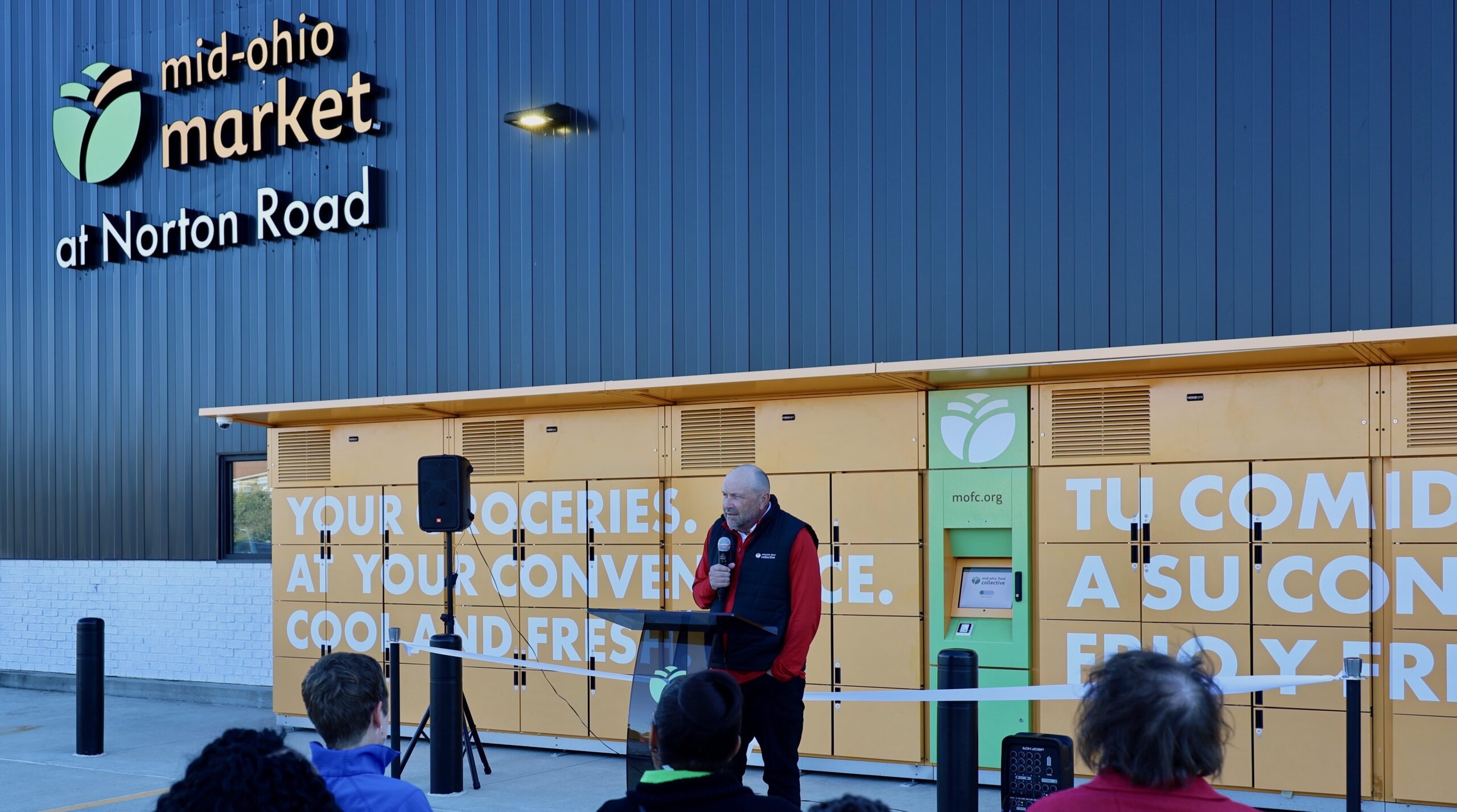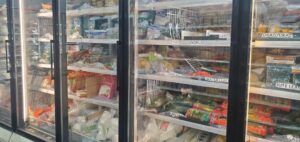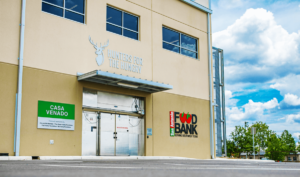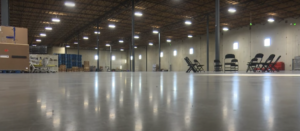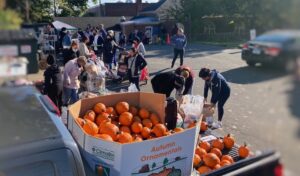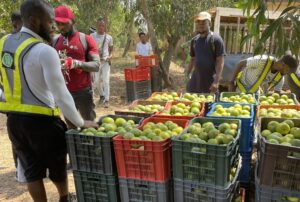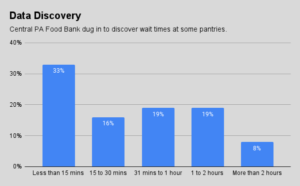Most food banks are aware that the pantries in their networks are not always available in the most convenient places at the most convenient times for clients.
One way Mid-Ohio Food Collective is addressing this issue is by opening a set of Amazon-style food lockers at one of its distribution outlets. The secured, refrigerated lockers let clients order food online and then pick it up at any time of the day or night.
As the lockers expand into more locations, Mid-Ohio anticipates they will greatly improve access to food throughout its 20-county service area in Central and Eastern Ohio. Some of the lockers may end up at libraries, transportation hubs, or other public spaces. “We think it’s going to be really powerful in our rural communities,” said Matt Habash, President and CEO.
Ever since Mid-Ohio ribbon-cutted the lockers on October 10, every one of the 72 lockers has been fully utilized by people ordering and picking up food. Clients choose their food using Feeding America’s Order Ahead software (an innovation that Mid-Ohio helped to develop) and are instructed to pick it up within 24 to 48 hours using a one-time PIN for access.
The window for ordering food opens at midnight, and by about 9am the next day, all the available slots are full. People are encouraged to come back every week. “We want them to come back because it’s fresh food,” Habash said.
Operationally, the food bank uses the same drivers who deliver to the food bank’s daycare partners to deliver to the lockers first. The lockers, provided by T4 Solutions, a U.S. distributor of Australian manufacturer ClicknCollect, cost about $150,000, though Habash estimated that adding in a few frozen lockers might run the cost up to about $175,000. Mid-Ohio’s lockers were made possible by an investment from Humana Healthy Horizons, a health plan that manages Medicaid benefits for nearly 95,000 Ohioans.
While food lockers are still a relatively new phenomenon in food banking, their placements to date illustrate their versatility. Houston Food Bank debuted a set of 40 food lockers at a local elementary school last summer. On Friday, Gleaners Food Bank of Indiana opened a set of 32 refrigerated lockers in partnership with a local hospital, enabling patients to pick up fresh, nutritious food while in the facility.
Some food pantries are also utilizing food lockers. The Market in Bonney Lake, Wash., expects to install half a dozen of its refrigerated Fresh Lockers throughout its service area. Bunker Hill Community College in Boston, which claimed to be the first college pantry in the country to offer refrigerated food lockers, now has them in two locations. And just last week, the University of Pittsburgh opened a set of 61 lockers that can store cold or prepared hot food, accessible via an app.
One complication for food banks is the difficulty of tracking customers as they navigate the system. At Mid-Ohio, the food lockers have their own software, which needs to connect to the Order Ahead software, which needs to connect back to the food bank’s own customer data. “You’ve got to have that connectivity or you don’t get information back on what your customers are doing,” Habash said. “You’re just fulfilling orders and not knowing.” He added that the food bank plans to share its learnings on connectivity with other food banks that may be struggling with the same issue.
The only hiccup in the current connectivity scheme is that clients currently receive two notifications – one is an e-mail telling them that their order is ready, and the other is a follow up text giving them a one-time PIN to access the locker. “Eventually, we would like that to just be a single message,” Habash said.
Mid-Ohio’s locker strategy dovetails with a longer-running initiative that also aims to increase access to food. Since 2019, Mid-Ohio has been opening a series of Mid-Ohio Markets that provide a grocery store experience in terms of layout, design, food choice and expanded hours. It now has eight such markets, some of which feature evening and weekend hours and are open up to 41 hours a week.
The outlets are purposely branded as markets, not pantries, to remove any stigma people may feel about receiving charitable food. Another important element of the Markets is that they include other services such as healthcare, job training, financial literacy or child care, depending on the location.
Even though Mid-Ohio has a network of nearly 700 traditional pantries, the hours of operation in some areas can be slim. In one zone of operation, for example, the total hours of service amount to less than 80 hours a month, despite there being plenty of pantries.
Between the Markets and the lockers, Mid-Ohio expects to fill in those gaps where access to food is lacking. “The idea is to use the Market strategy first,” Habash said. “And if that still doesn’t work for somebody, then we’re going to go to the locker system.” – Chris Costanzo
PHOTO, TOP: Matt Habash at the opening ceremony for the food bank’s new locker system.
Like what you’re reading?
Support Food Bank News
